This week’s featured wildflower can be grown in gardens without too much trouble and is popular with many species of bees. According to Wildflowers of Iowa Woodlands by Sylvan Runkel and Alvin Bull, Penstemon species are commonly called beardtongue because “One of the five stamens is sterile and does not produce pollen. It is often modified into a hairy or bearded tongue and probably attracts insects.” The blue or purple lines sometimes seen inside the tubular flowers are also believed to “function as nectar guides to visiting insects.”
After the jump I’ve enclosed several pictures of beardtongue in bloom, not far from Gray’s Lake in Des Moines. The last two photos show this wildflower near other plants I haven’t identified. If you know what they are, please post a comment in this thread or send me an e-mail: desmoinesdem AT yahoo.com.
This post is also a mid-week open thread: all topics welcome.
Runkel and Bull name more than a half-dozen Penstemon species that are native to Iowa, adding that “expert technical knowledge” may be needed to positively identify the species. Having asked some knowledgeable people, I believe the pictures below depict Penstemon digitalis, commonly known as foxglove beardtongue or smooth white beardtongue. It grows most often in open woods and meadows in the southern half of Iowa. The Illinois wildflowers website has a good description of this species.
Beardtongue flowers may be pink, white, or lavender. I’ve seen mostly white flowers blooming in Des Moines lately.
In this shot you can see the stamens and the violet lines guiding pollinators toward them.
These blossoms are much more pink. That’s common milkweed growing (but nowhere near flowering yet) to the left and behind the beardtongue.
The Illinois wildflowers website has helpful advice for gardeners who want to grow foxglove beardtongue:
Cultivation: The preference is full or partial sun, average levels of moisture, and loamy soil. This plant matures quickly during the spring, and the flowering stalks often ascend above neighboring plants. It adapts well to cultivation, is not bothered by disease, and is easy to grow. Under severe drought conditions, however, the leaves may turn yellow and the plant will wilt. […]
This is probably the easiest Penstemon sp. to grow in areas that lie east of the Mississippi river. The flowers are quite showy, and the plant is large enough to compete against many kinds of weeds. Another desirable feature is that the blooming period is rather long for an early season plant. Foxglove Penstemon can be distinguished from other members of the genus by the absence of hairs on the leaves and stems, a corolla that is primarily white on the outer surface (but sometimes with violet tints), the presence of tiny white hairs on the anthers (resembling small combs), and an absence of ridges on the lower inner surface of the corolla. The small hairs on the anthers can lodge against the hairs of a visiting bee, causing the stamens to bend downward to deposit pollen on the back of the insect, if it is sufficiently large in size.
Not the best shot of the beardtongue, but can anyone identify this grass and tell me whether it’s native?
I’m not sure whether these magenta flowers are native or escaped from someone’s garden. Many of them were mixed in with a large patch of beardtongue along the Meredith bike trail near downtown Des Moines.

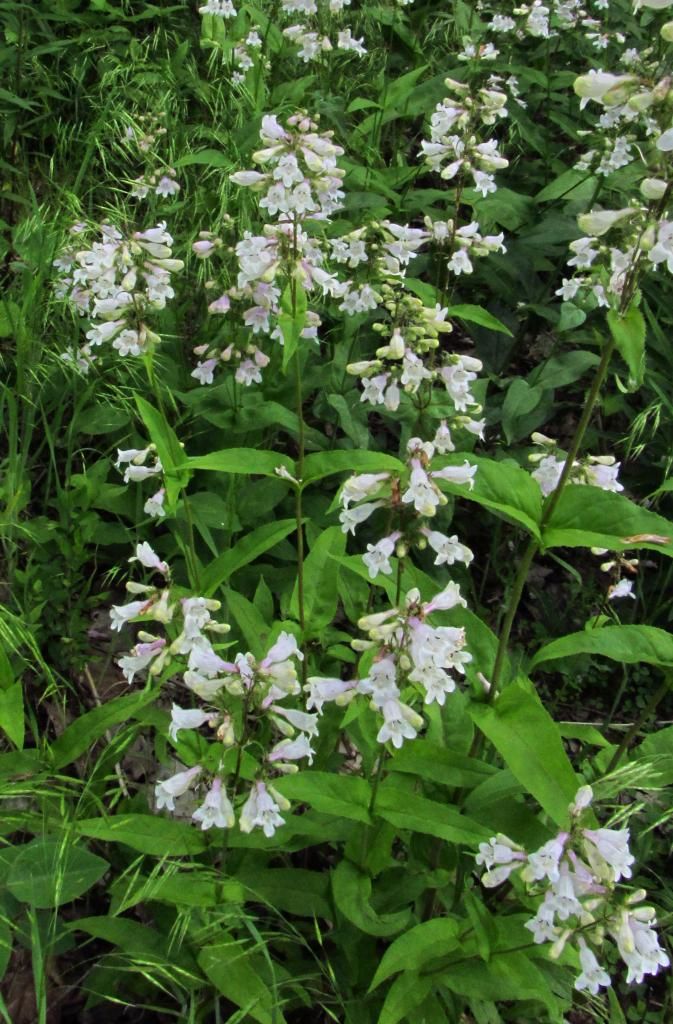

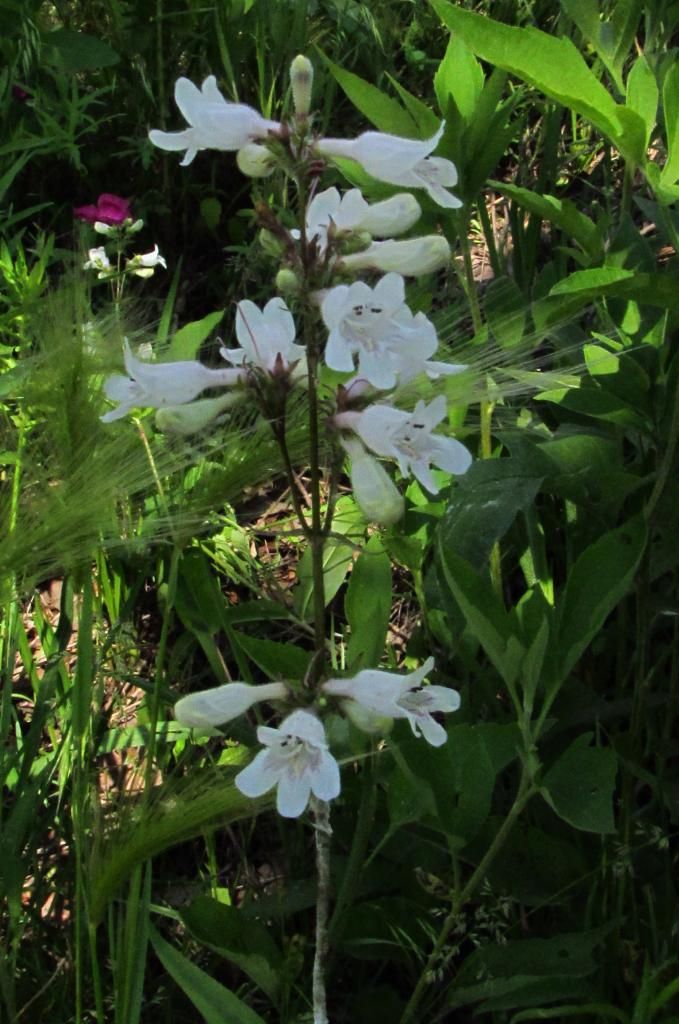
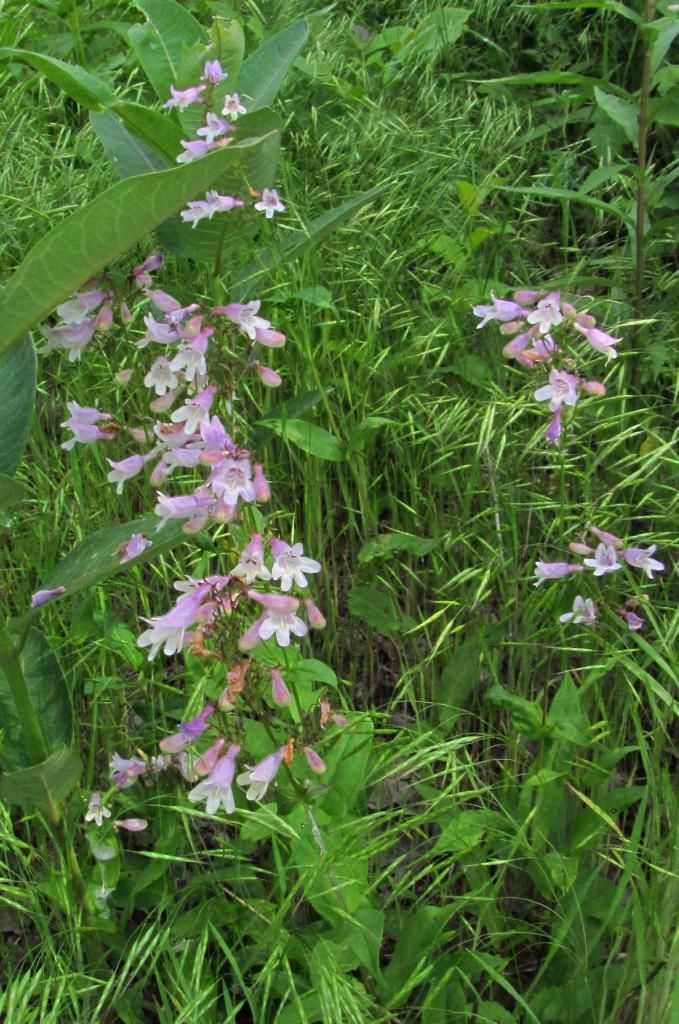
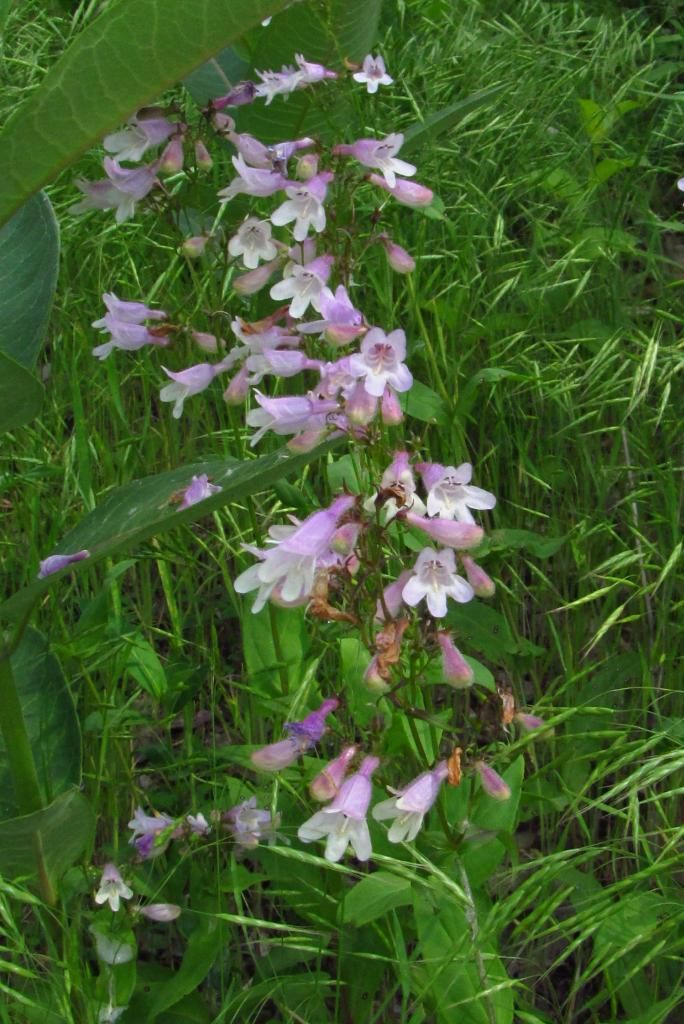
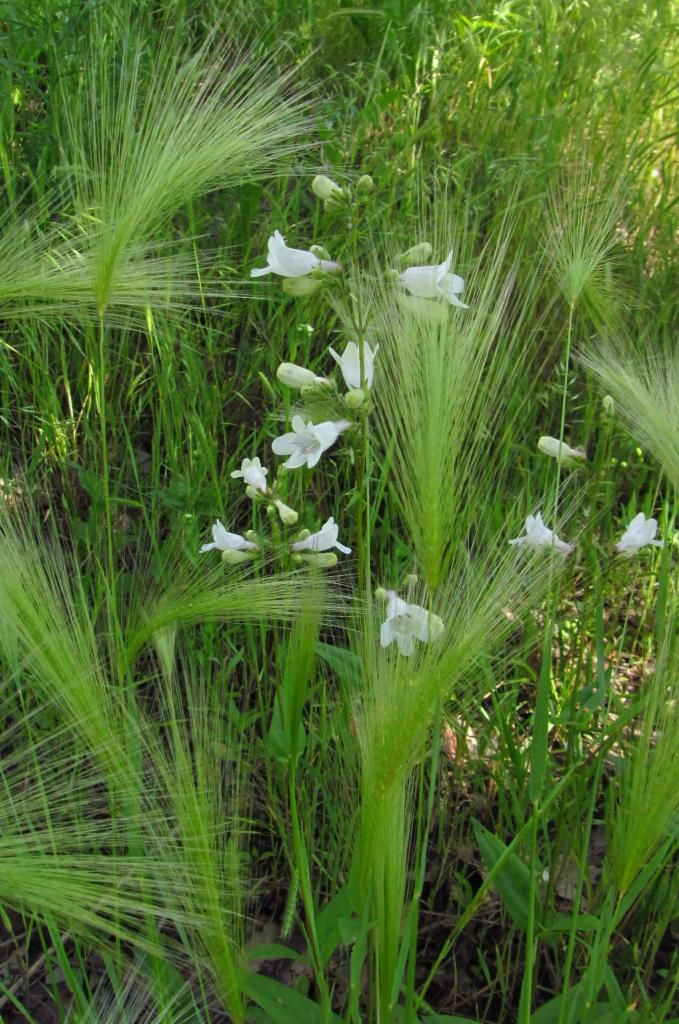
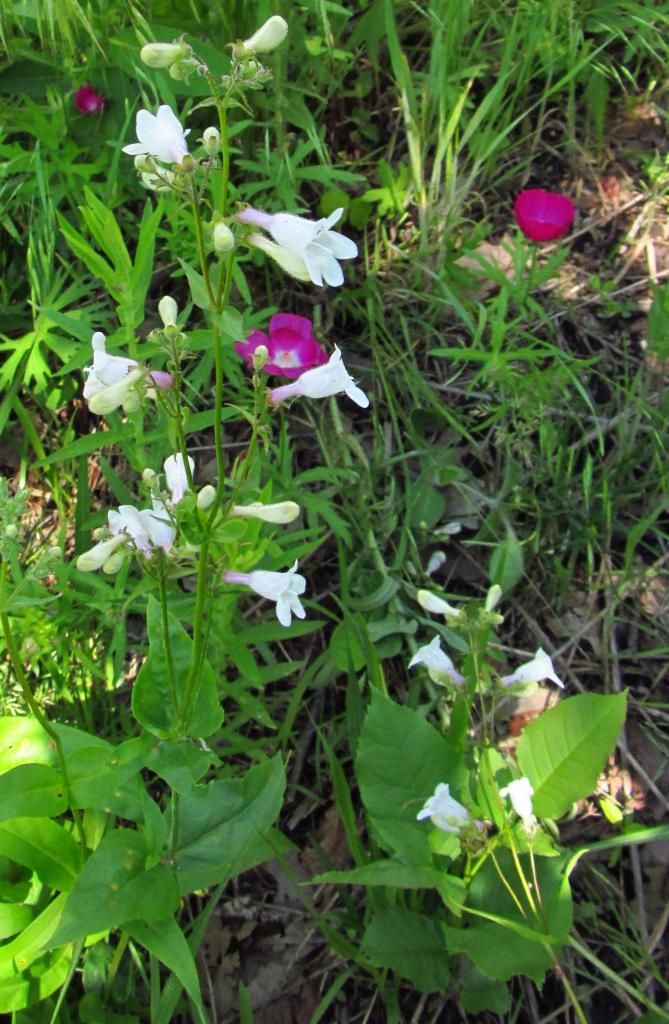
1 Comment
Plants with Penstamon
Penstamon digitalis has been so widely planted in Iowa that I really wish I could find it in a natural area where it hasn’t been planted. I’ve only seen it in plantings, and for me, it’s one of the signals that an area is a planting rather than an original natural area. It certainly is pretty.
The grass looks like squirrel-tail barley, Hordeum jubatum, which is a native grass that prefers disturbed soil. It’s so pretty when it grows in a patch that I’ve seen it often in photographs. I sometimes see it along roadsides.
The purple flower was almost certainly planted. It looks like purple poppy mallow, Callirhoe. That species is native to parts of Iowa, but it is rarely found as an indigenous plant and is far more common in plantings. It is kind of like purple coneflower in that respect.
PrairieFan Mon 24 Apr 1:07 AM